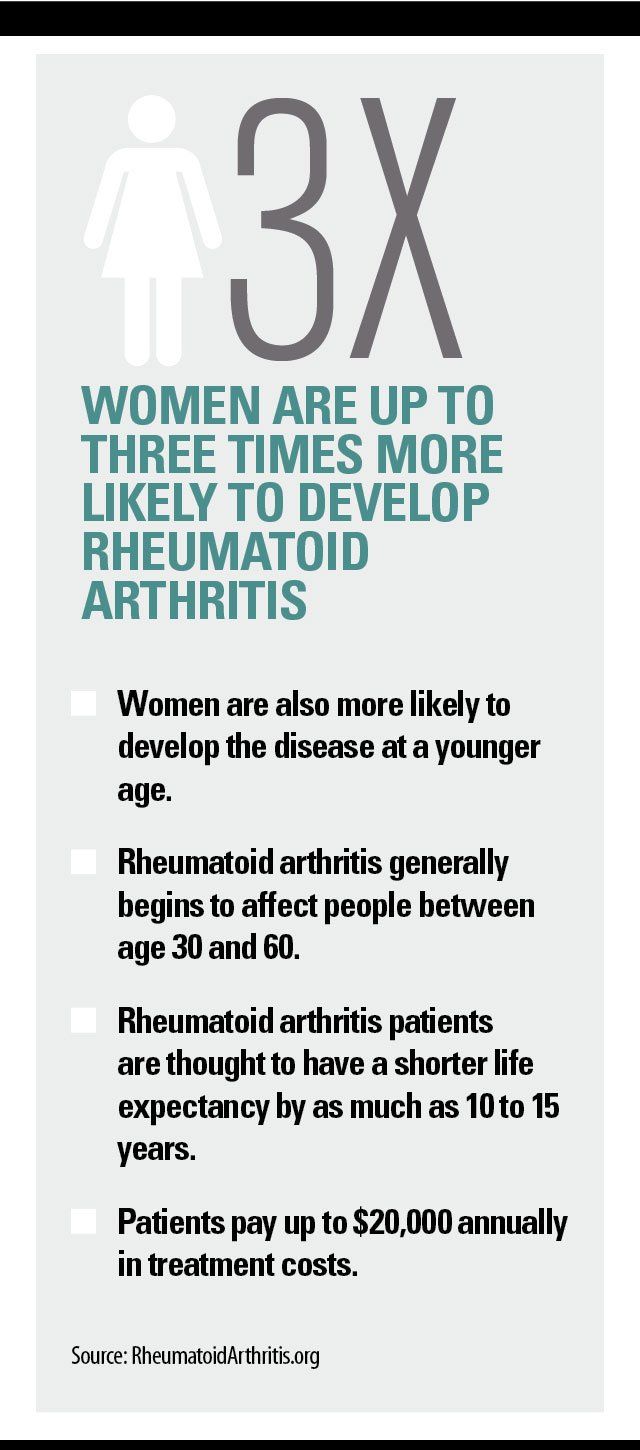New RA drugs and pipeline developments to watch
Treating RA is a work in progress. Here’s what you need to know.
While there have been many therapeutic advancements in drugs for rheumatoid arthritis (RA), it is still a condition without a cure. The primary aim of medications for RA thus becomes a slowing down of the progression of the disease or reaching remission by minimizing joint pain and improving quality of life.
A range of medications with different mechanisms of action compete in the RA marketplace, starting with the tried-and-true, anchor product methotrexate. Approved in 1988 to treat RA, it is a disease-modifying antirheumatic drug (DMARD), which suppresses the immune system and can be even more efficacious when combined with other RA medications.

A trio of biologics hit the market around the turn of the century-Humira (adalimumab), Remicade (infliximab) and Enbrel (etanercept), all TNF (tumor necrosis factor) inhibitors in 1998, 1999 and 2002, respectively. TNFs suppress the physiologic response to tumor necrosis factor, which is part of an inflammatory response.
JAK inhibitors-the first one approved for RA patients was Xeljanz (tofacitinib) from Pfizer in 2012-have picked up the slack for some patients who have an inadequate response to DMARDs.
These oral biologics interfere with the JAK-STAT signaling pathway, which transmits extracellular information into a cell nucleus.
A relatively new entry into the RA market is Kevzara (sarilumab), a human Interleukin-6R inhibitor (IL-6R) that suppresses the action of the IL-6R in RA. IL-6R can trigger chronic inflammation, causing tender and swollen joints, reduce physical function and destroy bone and cartilage associated with RA. Manufactured by Sanofi and Regeneron, it has been approved in this country, Canada, and the European Union.
Actemra (tocilizumab) is the only other IL-6R currently on the market. Johnson & Johnson’s sirukumab failed to make the cut, when the manufacturer decided not to respond to FDA requests for further clinical data.
These drugs are often used when DMARDs and TNFs have proved ineffective or intolerable.
Targeting RA
Lynn Ludmer, MD, rheumatologist at Mercy Medical Center in Baltimore, considers RA complex to treat because of the difficulty in identifying who will become disabled and in determining which patients will respond to a specific medication, and the limited effectiveness of certain medications.

“RA is a spectrum of disease for which patients respond to one drug or another,” says Nathan Wei, MD, a rheumatologist in Frederick, Maryland. “It is difficult to predict what the target is in any given patient. We are not aware ahead of time what to do next. How it manifests itself, however, is fairly typical-affecting a body’s small joints.”
Like Wei, Alejandro Badia, MD, a hand and upper extremity surgeon and the CEO of Badia Hand to Shoulder Center in Doral, Florida, sees RA as more than just a form of arthritis. “It should be considered a systemic disease process that is autoimmune, in which the body attacks itself and in this case, affects the joints.
“The challenge with [traditional RA treatments] is that they come with complications as their role is to essentially suppress the immune system,” he says. “Newer treatments are directed at improving these drugs and also minimizing their side effects.”
Wei says that “treating to target” is one of the most effective ways to address RA. The strategy includes:
- Setting a specific testing goal that signals either remission or low disease state.
- Testing monthly to monitor progress.
- Switching medication regimen promptly if progress isn’t made.
- Monitoring progress regularly.
Wei recommends starting patients off with methotrexate and depending on the response, switching to biologics.
Carole Huntsman, head of multiple sclerosis, oncology and immunology, North America Sanofi Genzyme, agrees with Wei. She believes there is evidence that patients can respond better when switching to a biologic with an alternative mechanism of action rather than continuing to cycle between TNF inhibitors.
On the other hand, Ludmer is not convinced that biologics work better than their predecessors and JAK inhibitors. She says she needs more studies proving their effectiveness.
Next: Two drugs face trials
Two drugs face trials
Mesoblast Ltd., a Melbourne, Australia-based company, has a new drug in phase 2 trials. It relies on proprietary allogeneic mesenchymal precursor cells with immunosuppressive and tissue repair properties.
CEO Silviu Itescu says the medication is the result of a high number of patients who are resistant to or suffer major side effects from anti-TNF medications-about one-third of the 30% of patients using the drugs. “We saw a need for a safe effective agent,” he says.
The new drug, he says, targets multiple pathways-TNF, IL6 and IL17 (inducers of inflammation) and switches off the disease at the core. It has an advantage because it is derived from a single donor, generating a consistent, uniform and reproductible product.
The Mesoblast product has been tested among 48 patients in a 12-week trial comparing two different doses and a placebo. The results indicate improvement in function for those on the drug and proof that higher doses are safe, effective, and durable, Itescu says. Another trial ran for 52 weeks comparing a single dose with a placebo and resulted in a lower disease activity score over placebo.
Itescu anticipates moving into phase 3 trials by the end of the year.
Another drug in trial is evobrutinib, a Bruton tyrosine kinase inhibitor (BTKi) from Merck KGaA, Darmstadt, Germany. The oral small molecule therapy is currently in phase 2b studies and is targeting multiple immunological indications including RA, lupus, and multiple sclerosis.
BTK inhibition is thought to suppress key immune cells, which preclinical research suggests may be therapeutically useful in certain autoimmune diseases.
Alise Reicin, head of global clinical development, Merck KGaA, says that evobrutinib represents one of the largest clinical development programs established for an investigational BTK inhibitor.
Early data have provided encouraging results to support continued development, including a study in mouse models of RA that displayed robust efficacy with a marked reduction in disease severity.
Results from a small phase 2a, signal-generating study met the predefined criteria for progressing to a dose-finding study; however, the study did not reach the statistical criteria across all patients enrolled, but there was a clear positive outcome in the pre-specified patient population conventionally studied across RA pivotal trials.
The estimated primary completion date for evobrutinib is March 2019 for RA. Launch timing is dependent on the design and extent of phase 3 studies, Reicin says.
She says it is premature to determine pricing for the new drug and whether payers would elect to put it on formulary. “We believe in value-based pricing, and Merck KGaA, Darmstadt, Germany, has an ongoing partnership with payers and providers to ensure fast and broad access to its treatments, as well as patient support programs to help assist patients in need.” Reicin says.
Huntsman says the same thing about Sanofi. “Regeneron and Sanofi have a shared goal with patients, physicians and payers to reduce the burden of RA and an ongoing commitment to continuing to work with payers/insurers to provide access to Kevzara,” she says.
The U.S. list price (wholesale acquisition cost) of Kevzara is $39,000/year for the 200 mg and 150 mg doses. “The price of the drug reflects the clinical value that it provides as a treatment for RA, and the list price is comparable to those of other biologics in the RA marketplace,” Huntsman says. â¨
Mari Edlin, a frequent contributor to Managed Healthcare Executive, is based in Sonoma, California.
David Calabrese of OptumRx Talks New Role, Market Insulin Prices and Other Topics 'On His Mind'
April 13th 2023In this month’s episode of the "What's On Your Mind podcast," Peter Wehrwein, managing editor of MHE connects with the now Chief Clinical Officer of OptumRx Integrated Pharmacies, David Calabrese. In this conversation, David touches on his transition in January as OptumRx’s former chief pharmacy officer and market president of health plans and PBMs to his new role as Chief Clinical Officer where he now focuses more on things such as specialty pharmacy to home delivery — with an overall goal of creating whole-patient care. Throughout the conversation, Calabrese also touched on the market’s hot topic of insulin prices and behavioral health services within the OptumRx community, among other topics.
Listen
A Conversation With Greg Baker, RPh, CEO of AffirmedRx
March 31st 2024Greg Baker, CEO of AffirmedRx, describes his early career, shares some of his critical opinions about the pharmacy benefit management (PBM) industry and how, in his view, his company is offering a better alternative.
Read More
Briana Contreras, editor of Managed Healthcare Executive, spoke with Nancy Lurker, CEO and president of EyePoint Pharmaceuticals. Nancy shared a bit about EyePoint and how the organization’s innovative therapies are addressing patient needs through eye care, and most importantly, she addressed C-Suite positions like the CEO role. Nancy shared advice for those seeking to reach the CEO level, especially toward women in healthcare and other roles, and what it takes to run a biopharma company.
Listen
Florida Gets the OK. But Will Drug Importation from Canada Actually Happen?
March 5th 2024Canadian health officials warn that maintaining a drug supply for Canadians is their priority. The staunch opposition of the U.S. pharmaceutical industry may also be an obstacle to imports from north of the border.
Read More